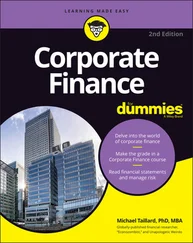There is an opportunity to create or re-create an asset allocation from scratch. Having a large amount of cash can be a tricky thing for any investor. When should I put the money to work? At the same time, the lack of “baggage,” such as emotional ties to certain investments, tax implications, and a host of other issues that accompany an existing allocation, is ideal. The time to apply the principles learned in this book is at the moment that one has the opportunity to invest only cash or “clean house” on an existing portfolio.
A life “trauma” has taken place. Sometimes investors are faced with a critical investment decision during a traumatic time, such as a divorce, a death in the family, a job loss, or other similar life event. These are the times that this book can add a significant amount of value to this type of situation by using its concepts.
A concentrated stock position is held. When an investor holds a single stock or other concentrated stock position, emotions typically run high. In my practice, I find it incredibly difficult to get people “off the dime” to diversify their holdings in a single stock. The reasons are well known: “I know the company, so I feel comfortable holding the stock”; “I feel disloyal selling the stock”; “My peers will look down on me if I sell any stock”; “My grandfather owned this stock, so I will not sell it”; the list goes on and on. This is the exact time to employ behavioral finance. Advisors must isolate what biases are being employed by the investor, and then work together with the investor to relieve the stress caused by these biases. This book is essential in these cases.
Retirement. When an investor enters the retirement phase, behavioral finance becomes critically important. This is so because the portfolio structure can mean the difference between living a comfortable retirement and outliving one's assets. Retirement is typically a time of reassessment, reevaluation, and is a great opportunity for the advisor to strengthen and deepen the relationship to include behavioral finance.
Wealth Transfer and Legacy is being considered. Many wealthy investors want to leave a legacy. Is there any more emotional issue than this one? Having a frank discussion about what is possible and what is not, is difficult and often fraught with emotional cross-currents that the advisor would be well advised to stand clear of. However, by bringing behavioral finance into the discussion and setting an objective outside the councilor's viewpoint, the investor may well be able to draw his or her own conclusion about what direction to take when leaving a legacy.
Trust Creation. Creating a trust is also a time of emotion, that may bring psychological biases to the surface. Mental accounting comes to mind. If an investor says to him or herself “OK, I will have this pot of trust money over here to invest, and that pot of spending money over there to invest” the investor may well miss the big picture of overall portfolio management. The practical application of behavioral finance can be of great assistance at these times.
Naturally, there are many more situations not listed here that can arise where this book will be helpful.
The first part of the book is an introduction to the practical application of behavioral finance. These chapters will include an overview of what behavioral finance is at an individual investor level and an introduction to the behavioral biases that will be used when incorporating investor behavior into the asset allocation process. Parts Two, Three, and Four include a comprehensive review, complete with a general description, practical application, implications for investors, a bias diagnostic, and advice. Part Five of the book reviews four Behavioral Investor Types, or BITS, and pulls everything together in the form of case studies that will clearly demonstrate how investors can use behavioral finance in real-world portfolio settings. Part Six covers portfolio implementation: Behavioral Finance Aspects of the Active/Passive Debate, Behaviorally Aware Portfolio Construction, and Behavioral Finance and Market Corrections.
I would like to acknowledge all my colleagues and clients who have contributed to broadening my knowledge in behavioral finance and wealth management.
Michael M. Pompian, CFA, CFP, CAIA, is the Founder and Chief Investment Officer of Sunpointe Investments, a multi-family office investment firm in St. Louis, Missouri. He was formerly a Partner at Mercer Investment Consulting for 10 years and was the National Segment Leader for the private wealth business where he consulted to the firm's largest family office clients, overseeing $8 billion. Prior to joining Mercer, Michael was a Wealth Management Advisor with Merrill Lynch and a private banker with PNC Private Bank. Prior to these positions, Michael was on the investment staff of a family office. Michael earned his MBA in Finance from Tulane University and graduated from the University of New Hampshire with a BS degree in Management. Michael has written four books: Advising Ultra-Affluent Clients and Family Offices (Wiley 2009), Behavioral Finance and Wealth Management (Wiley 2006), Behavioral Finance and Wealth Management, 2nd Edition (Wiley 2012) and Behavioral Investor Types (Wiley 2015). He writes a monthly column for Morningstar Advisor and has been quoted in Money Magazine , The New York Times , Bloomberg , and CNBC, among other media outlets. Michael holds the Chartered Financial Analyst (CFA) designation, Chartered Alternative Investment Analyst (CAIA), Certified Financial Planner (CFP ®), and Certified Trust Financial Advisor (CTFA). He is a member of the CFA Institute, the New York Society of Securities Analysts (NYSSA), and the CFA Society of St. Louis. He is a regular speaker at family office conferences globally.
PART I INTRODUCTION TO BEHAVIORAL FINANCE
In Chapters 1and 2, Part One of the book, readers will get an introduction to behavioral finance. This will set up Chapters 3through 22, which review 20 behavioral biases, both cognitive and emotional. Two types of cognitive bias are reviewed in Chapters 3through 15: Belief Perseverance cognitive biases are covered in Chapters 3through 8, and Information Processing cognitive biases are covered in Chapters 9through 15. Emotional biases are then covered in Chapters 16through 22. After these chapters, the book introduces four Behavioral Investor Types (BITs) and then the BITs are applied in four case studies.
1 What Is Behavioral Finance and Why Does It Matter?
People in standard finance are rational. People in behavioral finance are normal .
— Meir Statman, PhD, Santa Clara University
If you arereading this book, you have decided that building the best portfolio for you, your family or your organization requires a solid understanding of human behavior. And the most important human behavior to understand is your own! After all, you need to make the best financial decisions possible and this requires understanding how you behave when money is involved. After advising individuals and families for over 25 years on their investment portfolios, and now running my own investment firm, I have found that understanding and applying behavioral finance to the investment process is the absolutely best way to manage portfolios for long term financial success. It may be counter-intuitive, but unless one has super-human capabilities to know which direction the markets are going all the time, the best strategy for managing a portfolio is to choose a comfortable level of risk and stick with that strategy. The less tinkering the better! Does this mean you don't pay attention to it? Of course not! Investors need to pay attention to the value of assets they own, the structural changes in companies or industries that occur, portfolio rebalancing points, etc.—but the core asset allocation framework should remain the same unless personal circumstances have changed. So why is it so hard for investors to stay invested during periods of market volatility? Put simply, many people don't understand how emotions and irrational behaviors creep into the investment process. This book is all about understanding and diagnosing your own behavior so that you can create the best portfolios and have long-term investment success!
Читать дальше












